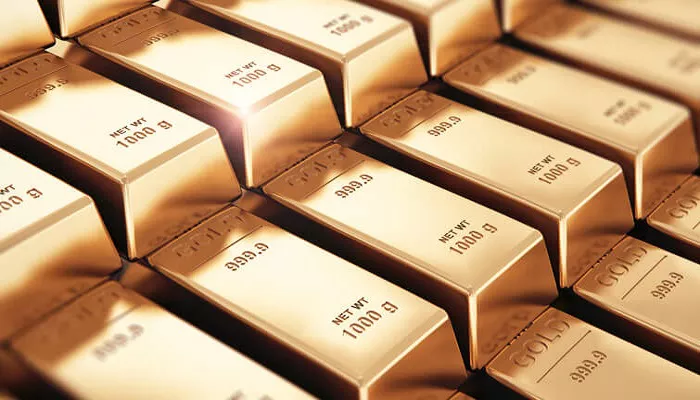Gold prices in India saw a slight increase on Wednesday, June 4, 2025, with the price per gram rising to ₹9,275.17 from ₹9,256.11 on Tuesday. Similarly, the price per tola surged to ₹108,183.80, up from ₹107,961.50 the previous day. Several factors contributed to this uptick in gold prices, primarily driven by a mix of global economic uncertainty and geopolitical tensions.
Key Factors Driving Gold Prices Higher
The US Dollar faced downward pressure due to a combination of declining US Treasury bond yields and expectations of potential Federal Reserve rate cuts. This pressure on the dollar occurred despite a positive JOLTS job openings report, which showed a healthy labor market. However, comments from Federal Reserve officials such as Atlanta Fed President Raphael Bostic, Chicago Fed President Austan Goolsbee, and Fed Board of Governors member Lisa Cook expressed caution over the impact of economic policies on inflation and economic activity, further fueling concerns about the US economy.
In addition, ongoing trade-related uncertainties—particularly stemming from an expected call between US President Donald Trump and Chinese President Xi Jinping, as well as the looming threat of increased tariffs on steel and aluminum—boosted the safe-haven appeal of gold. Investors seeking protection from the potential fallout of escalating trade tensions have historically turned to gold, which is viewed as a reliable store of value during periods of uncertainty.
Gold as a Safe-Haven Asset
Gold has long been regarded as a hedge against inflation and currency depreciation, particularly in times of geopolitical instability and financial volatility. Central banks around the world, including those of China, India, and Turkey, are major holders of gold. In fact, central banks added a record 1,136 tonnes of gold in 2022, with a value of around $70 billion. This accumulation underscores the ongoing demand for gold as a safe asset amidst global uncertainty.
Gold typically has an inverse relationship with the US Dollar and US Treasuries. Lower interest rates tend to boost gold prices, while higher rates generally weigh them down. As a result, lower interest rate expectations have been supportive of gold’s upward movement.
Geopolitical and Economic Dynamics
Geopolitical instability, including tensions between the US and key trading partners like China and the European Union, continues to provide underlying support for gold prices. These uncertainties have heightened demand for gold as a safe-haven asset. Furthermore, ongoing fears of recessions and broader economic risks only add to the precious metal’s appeal.
As of June 4, the price of 10 grams of 24-carat gold in major Indian cities ranged between ₹99,170 and ₹99,320, while 22-carat gold prices ranged from ₹90,900 to ₹91,050. Meanwhile, COMEX gold futures fell by 0.6% the previous day, settling below $3,380 per ounce, as the US dollar rebounded somewhat.
Investment Considerations
While the trade tensions between the US and its key partners such as China and the EU continue to provide a degree of support for gold prices, investors are advised to exercise caution. Given the uncertain economic landscape, consulting with certified investment experts can help ensure that any decisions on gold allocations align with risk tolerance and investment objectives.
Overall, the interplay of geopolitical risks, US economic data, and central bank policies will continue to shape the trajectory of gold prices in the coming months. As a result, gold remains a viable option for diversification in investment portfolios amid ongoing uncertainties.
Related topics:
- India Surpasses China in Gold Purchases, Buying 51% More in Three Months
- Qilu Bank Enhances Support for Small Businesses with Innovative Financial Tools
- Bitcoin Poised for a Surge Amid Gold’s Delivery Delays, Expert Claims


